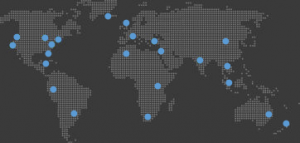 I just returned from a few weeks in Paris. Along with enjoying all the delights my second favorite city in the world has to offer I met with several startups. All have interesting product/services and great teams but as usual they are missing one thing…
I just returned from a few weeks in Paris. Along with enjoying all the delights my second favorite city in the world has to offer I met with several startups. All have interesting product/services and great teams but as usual they are missing one thing…
They just don’t have a good way to scale their businesses. How will they take their enterprise from 1,000 users to 100,000 users and beyond? And it would be nice if they could make even a little profit along the way.
This basic problem that plagues most startups is something I call “Distribution”. How will they attract customers, deliver their product/service, and extract payment? (And make a profit!)
Past and current distribution models start with things like spots on store shelves or Amazon for physical products, social networks for advertising supported services, and Business to Business sales. New businesses can use web ads, Google/Facebook Ads, direct email, billboards, subway ads, and more… They all cost money. The key is the ability to convert a lead to a paying customer for less money than it costs to acquire the customer.
This “Distribution” stuff sounds simple but most startups seem to think customers will just appear when their product is unveiled. Since most of the current “Distribution” models are flooded, noisy, and expensive the trick might be to find a new “Distribution” model.
What are some of the new ways to get a product or service in front of potential users?
Face it… If a startup can find a new Distribution model that makes money and can scale good things will happen. So why not start out with a proven distribution model from day one? Most startups build an Minimum Viable Product (MVP) first then look for a way to acquire customers.
Here’s a tip… It’s always a good thing if your distribution point is close to the pain point. Uber is a good example of this. The pain point is the guy standing on the corner of Lexington and 45th in New York City in the rain looking for a non-existent taxi. That Uber App on his phone is the distribution point. The pain point and the distribution point intersect.
Can you think of other examples?
Most successful startups share this one trait… Their distribution and pain points intersect. Does yours?



